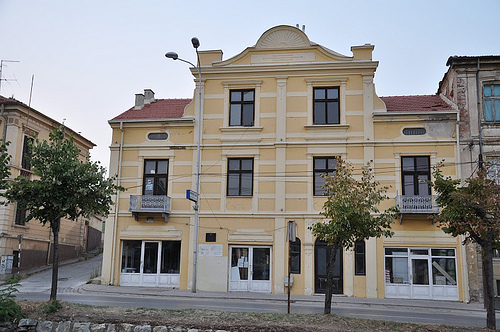 TIRANA, Nov. 24- The Congress of Manastir was one of the most notable academic conference that took part in Albania’s past, which shaped our nation’s history. The Congress took place at the city of Manastir from Nov. 14-22, and it served as an assembly discussing about the current and future politics and culture of Albania. Another key point of discussion was also deciding on an alphabet.
TIRANA, Nov. 24- The Congress of Manastir was one of the most notable academic conference that took part in Albania’s past, which shaped our nation’s history. The Congress took place at the city of Manastir from Nov. 14-22, and it served as an assembly discussing about the current and future politics and culture of Albania. Another key point of discussion was also deciding on an alphabet.
50 delegates from various Albanian associations, clubs, and national bodies gathered at the Congress, that was organized by the association ‘’Bashkimi’’ (Union), at the house of Fehim Zalavani which served as the headquarters of the association. A commision was raised for creating the alphabet based on the latin, as proposed and agreed upon during the conference.
A 36 letters alphabet was created, which was later implemented in various newspapers and magazines, such as Mid’hat Frasheri’s cultural magazine ‘’Diturija’’ (Knowledge). Mid’hat Frasheri was an Albanian writer and nationalist, descendent of the Frasheris, his father being intellectual Abdyl Frasheri. Mid’hat participated in the Congress and was also part of the commision that created the alphabet. He created the magazine so the alphabet would start being implemented by publishing various cultural and linguistics researched articles.
The vaster influence of the Congress was felt after the Congress of Elbasan, in Sept. 1909, which decided in creating Albanian schools using the new alphabet, or introducing it in already existing schools. The first school that started using the alphabet was in Elbasan, that opened its door on Dec. 1, 1909.
These congresses served to unite Albanians from all regions in the war of national liberation, using culture and education. Establishing a unique alphabet fit for the Albanian language was a first step towards victory, as it established a linguistic independence that drew the Albanians further from the Ottoman influence through language.
The Ottoman Empire saw this as a threat as Albania held the highest number of Muslims in Balkans and except Istanbul in Europe. The alphabet saw a resistance from the Albanian Muslims, so Bashkimi sought the help of the Catholic community in Albania. The latter, didn’t show any apparent resistance, as they were very much sympathetic on establishing an Albanian alphabet. The Catholics, especially the Jesuits in Shkodra, have been using an adapted written language using the Turkish letters and spoken Albanian from throughout the country for theur publications.
They had three issues that required from the Congress of Manastir regarding the alphabet: to be easy and fast to write, letter symbols, beautiful when written. This community didn’t want to use the Turkish alphabet anymore, however their readers were used to that language. But they didn’t want a long and slow alphabet as well, but something easy that was adaptable to Albanian and that could be learned fast.
Some documents claim the lack of participation of Shkodra’s catholics, but they did send Luigj Gurakuqi and Mati Logoreci as a delegate to the Congress, as the clerics saw the alphabet as one important step towards unification, too. However, they were delegated from Shkodra and other associations, and not directly from the Jesuits club. As already mentioned, they did want unification and were ready to use the alphabet that was going to be agreed upon from all regions of Albania, however they held a neutral position in decision-making so as not to induce any divisions.
Another interesting name from the Congress is that of Parashqevi Qiriazi, the only female delegate in the Congress, coming from the Korca School of Maidens. She was assigned secretary of the committee and established the ABC for the alphabet, wrote its symbolic hymn, and even later established the women’s association “Yll’i Mengjezit” (Morning star). After moving at the USA, she set up a newspaper with the same name, on which she published patriotic, educative and cultural articles in Albanian, both in the Albanian and American context. In order for the alphabet to spread quickly and be learnt from the people, she would publish the ABC in each newspaper issue.
It was thought that the hymn of the alphabet was copied from some French music, however that is not true. Parashqevi and her older sister Sevasti Qiriazi, graduated from an American protestant college in Istanbul, the Constantinople Women’s College. The professors there were Americans. The original tune of our hymn comes from a song taught at Yale College in America, about the pride, lessons, friendships and loyalty learned at the college. It was most certainly taught at the Women’s college from the professors to the girls.
As an inspiring song, the tune remained with Parashqevi Qiriazi years after she graduated. She used the tune of the song just for the same reason to inspire and motivate Albanians towards unification, as the pressure from the Ottomans was on the rise against the alphabet. Since the melody still resounded in Qiriazi’s head, she was assured that this song would remain due time.










